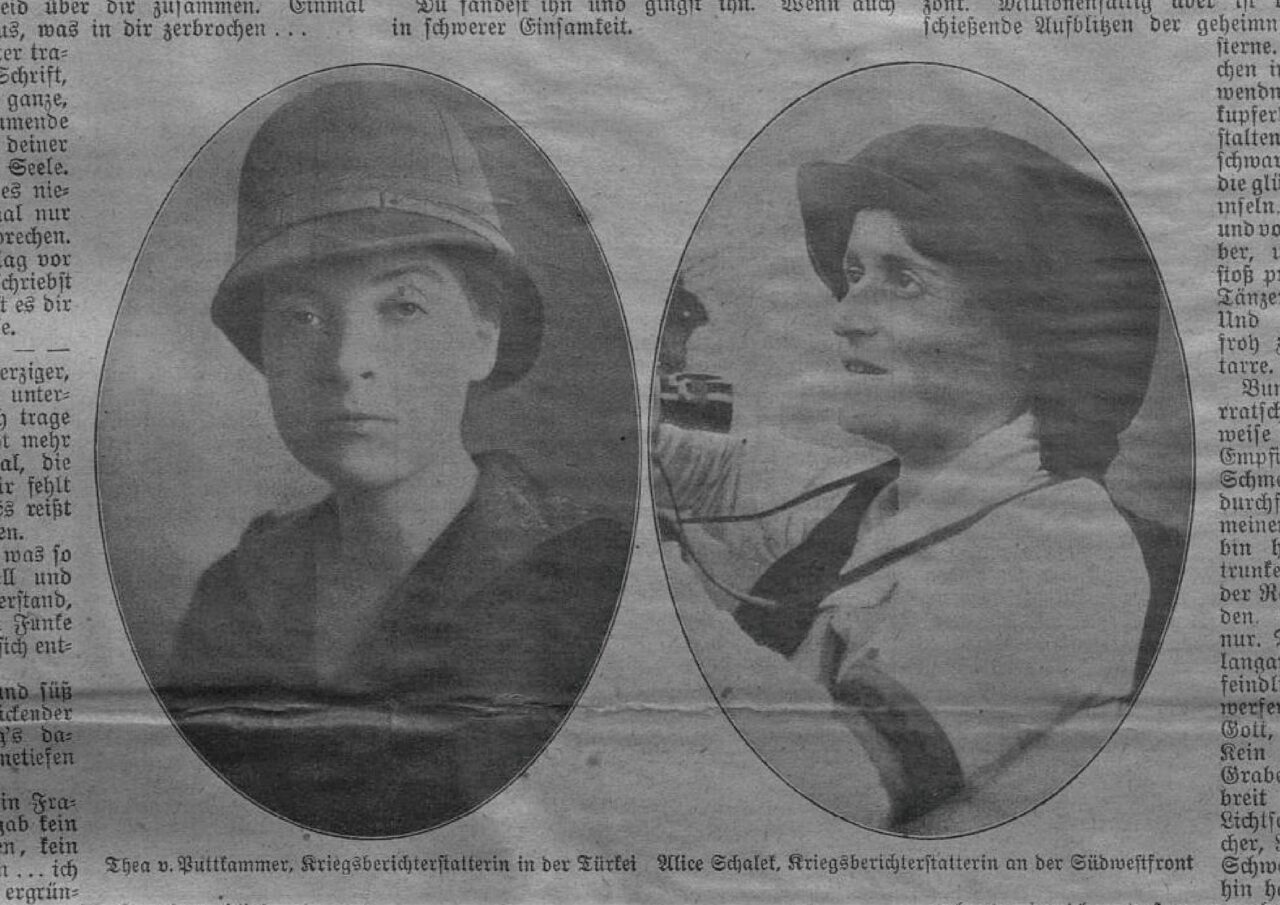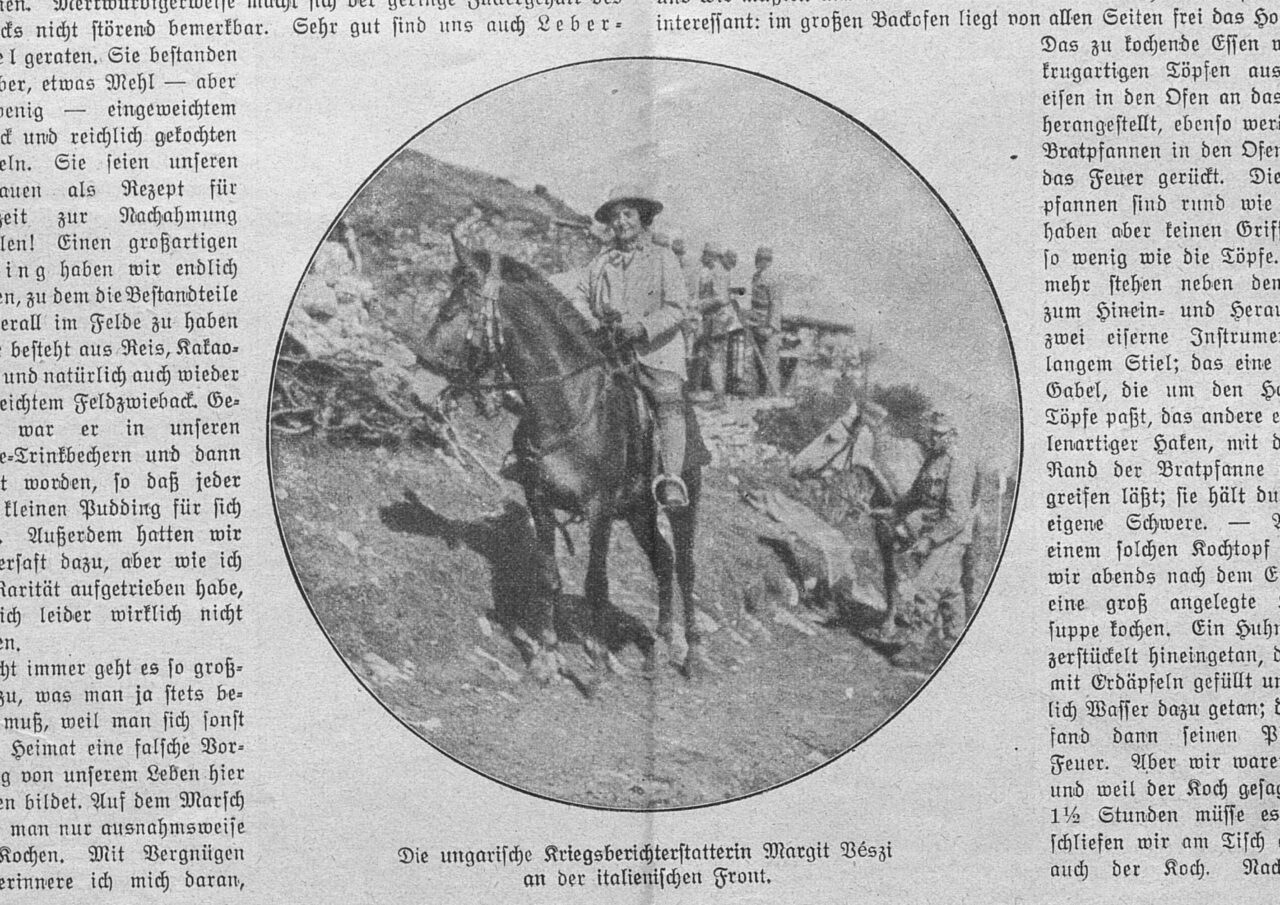This project sheds fresh light on the history of women in journalism by focusing on the largely forgotten role of female war reporters during the First World War. These women came from a variety of belligerent and neutral countries and reported from war theatres in different parts of the world. They published their accounts and photographs in well-known newspapers and magazines mostly under their own names, occasionally under pseudonyms.
Notable examples include Sofía Casanova from neutral Spain who covered the Eastern war theatre for the Madrid daily ABC. The Americans Nellie Bly, Peggy Hull, Mary Boyle O’Reilly, Rheta Childe Dorr, Helen Johns Kirtland, and Mary Roberts Rinehart, among others, reported from Russia and the Western Front. Inez Milholland briefly wrote on the war in Italy for the New York Tribune before being dismissed for her pacifist views and expelled by the Italian government.
As regards the Allied countries, Louise Mack from Australia recounted the German invasion of Belgium for British papers. Mrs. Waterman was the Milan correspondent of the London Times and covered the Italian front. In France, the pacifist Marcelle Capy reported on the home front, while Marylie Markovitch reported from the Eastern Front in Russia. The Italian journalists Flavia Steno, Ester Danesi Traversari and Stefania Türr witnessed the war on the front in Italy.
On the side of the Central Powers, Thea von Puttkamer was a German correspondent based in Constantinople, and Alice Schalek and Margit Vészi were accredited with the Austro-Hungarian army and covered the Italian and Eastern fronts.



Academic studies of female war reporters are scarce; women are conspicuously absent from the leading surveys of war correspondents during the First World War. Likewise, histories of women journalists largelyignore the war. The few studies that do exist tend to focus on American female war reporters. As a result, we know much less about women from other nations.
Assuming a comparative perspective, this project explores how women from various European countries, the British Dominions and the United States managed to access the frontlines and reported from different war theatres in Europe, the Middle East, Asia and Africa. It sketches out their professional biographies and outlines the manifold roles they assumed during the war. It argues that the first total war was not exclusively told from a male point of view. Women journalists provided an alternative, multifaceted female perspective on the war.
Female war reporting had many different faces. Few women were accredited by the armed forces – Italy and Austria were notable exceptions offering accreditation to a number of women. Meanwhile, the Allies on the Western Front were very restrictive in admitting women near the frontline, let alone offering them accreditation. Nonetheless, some women were allowed to visit the Western Front with an official permit. Others stayed further away from the fighting, but still reported on the war. A large body of war news was produced by nurses writing in the press about their experiences in field hospitals and ambulances. Still others were focusing on the home front and the war’s impact on civilians.
Women war correspondents’ coverage of the war was diverse. It depended on a variety of forces. These included their access to the frontline, assignments by their newspapers, and their professional and personal interests. Correspondents wrote about combat, the war’s impact on soldiers, relief work, or the home front. Female war reporters covered the First World War from many different perspectives, thus complementing and widening coverage provided by their male counterparts.
This project has received initial funding from the University of Bremen’s Central Research Development Fund (EUR 2.360,00, in 2018).
Publications
Seul, Stephanie: “Transcending Boundaries: Daily Express Correspondent Annie Christitch’s Reporting from First World War Serbia,” TMG Journal for Media History 24,1-2 (2021), pp. 1-38. DOI: http://doi.org/10.18146/tmg.791.
Seul, Stephanie: “Women War Reporters”, in Ute Daniel, Peter Gatrell, Oliver Janz, Heather Jones, Jennifer Keene, Alan Kramer, and Bill Nasson (eds.), 1914-1918 Online: International Encyclopedia of the First World War, issued by Freie Universität Berlin, Berlin 2019. DOI: 10.15463/ie1418.11385.
Seul, Stephanie: “A female war correspondent on the Italian front, 1915-1917: The Austrian travel journalist and photographer Alice Schalek,” Journal of Modern Italian Studies 21,2 (2016), pp. 220-51.